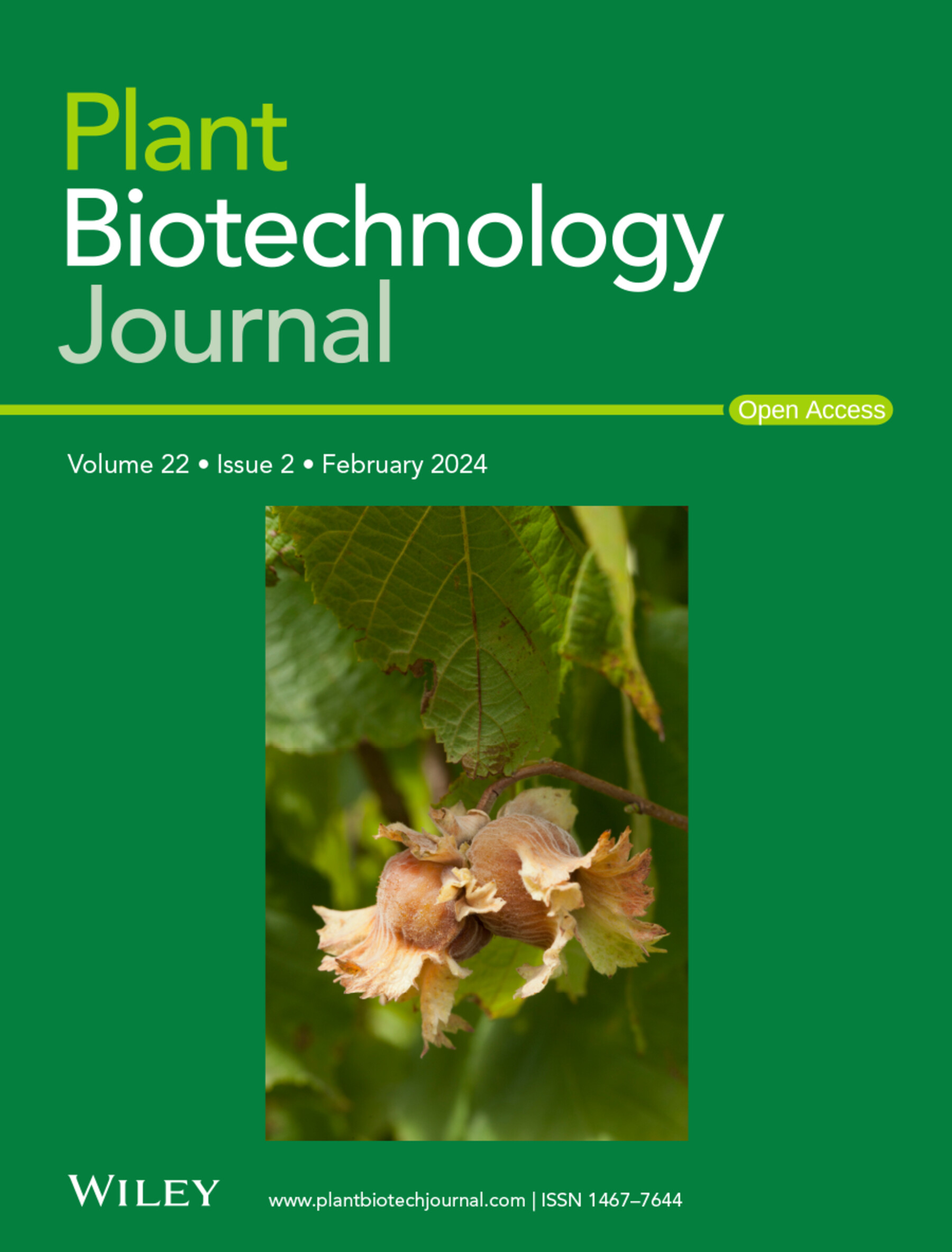A fijivirus capsid protein hijacks autophagy degrading an ω‐3 fatty acid desaturase to suppress jasmonate‐mediated antiviral defence
IF 10.1
1区 生物学
Q1 BIOTECHNOLOGY & APPLIED MICROBIOLOGY
引用次数: 0
Abstract
SummaryPlant viruses often suppress jasmonic acid (JA)‐mediated defences through disturbing JA signalling or biosynthesis pathways to benefit their own infection. Few studies have examined how the precursors of JA biosynthesis are regulated by viral infection. In this study, we demonstrate that rice black‐streaked dwarf virus (RBSDV) infection inhibits the production of α‐linolenic acid (C18:3), a key JA biosynthesis precursor that is catalysed by a set of fatty acid desaturases (FADs). The viral capsid protein P10 directly interacts with OsFAD7, an ω‐3 fatty acid desaturase, and promotes its autophagic degradation through an ATG8‐interaction motif (AIM). This disrupts JA production and weakens antiviral defence against RBSDV infection. Genetic analysis reveals that overexpression of斐济病毒衣壳蛋白劫持自噬降解ω - 3脂肪酸去饱和酶,抑制茉莉酸介导的抗病毒防御
植物病毒通常通过干扰茉莉酸信号或生物合成途径来抑制茉莉酸介导的防御,从而有利于自身的感染。很少有研究考察JA生物合成的前体是如何受病毒感染调控的。在这项研究中,我们证明了水稻黑条纹矮病毒(RBSDV)感染抑制α -亚麻酸(C18:3)的产生,α -亚麻酸是一种关键的JA生物合成前体,由一组脂肪酸去饱和酶(FADs)催化。病毒衣壳蛋白P10直接与OsFAD7(一种ω‐3脂肪酸去饱和酶)相互作用,并通过ATG8‐相互作用基序(AIM)促进其自噬降解。这破坏了JA的产生,削弱了对RBSDV感染的抗病毒防御。遗传分析表明,OsFAD7过表达可提高JA水平和对病毒的抗性。但如果JA受体OsCOI1a被沉默,则OsFAD7介导的抗病毒耐药性会减弱,这表明OsFAD7增强对RBSDV感染的抗性依赖于JA途径。我们的发现揭示了一种抑制JA代谢源生物合成的新病毒策略,为开发病毒保护策略和抗病毒作物提供了见解。
本文章由计算机程序翻译,如有差异,请以英文原文为准。
求助全文
约1分钟内获得全文
求助全文
来源期刊

Plant Biotechnology Journal
生物-生物工程与应用微生物
CiteScore
20.50
自引率
2.90%
发文量
201
审稿时长
1 months
期刊介绍:
Plant Biotechnology Journal aspires to publish original research and insightful reviews of high impact, authored by prominent researchers in applied plant science. The journal places a special emphasis on molecular plant sciences and their practical applications through plant biotechnology. Our goal is to establish a platform for showcasing significant advances in the field, encompassing curiosity-driven studies with potential applications, strategic research in plant biotechnology, scientific analysis of crucial issues for the beneficial utilization of plant sciences, and assessments of the performance of plant biotechnology products in practical applications.
 求助内容:
求助内容: 应助结果提醒方式:
应助结果提醒方式:


